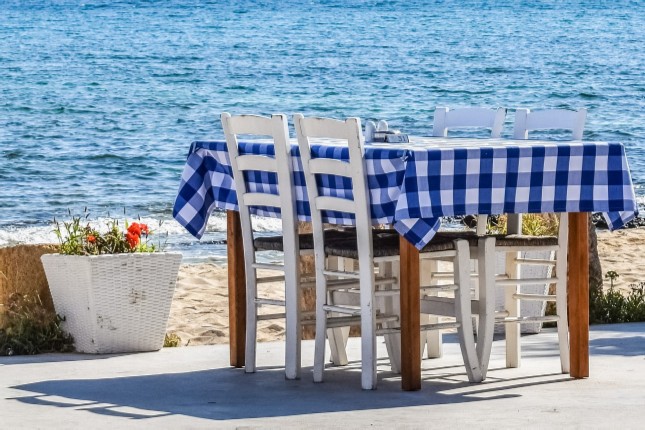In Greece eating out and sharing a meal with family and friends is part of the local culinary culture. There are many different types of traditional eateries that fall into several well-loved categories where people can enjoy good food outside their homes. From the busiest and most touristic city to the smallest village and island, dining out in Greece is not only about what you eat but a whole sensory experience. Whether its ouzo and meze you're looking for or an all-out feast, Greece has just the right eatery for you!
The Souvlatzidiko
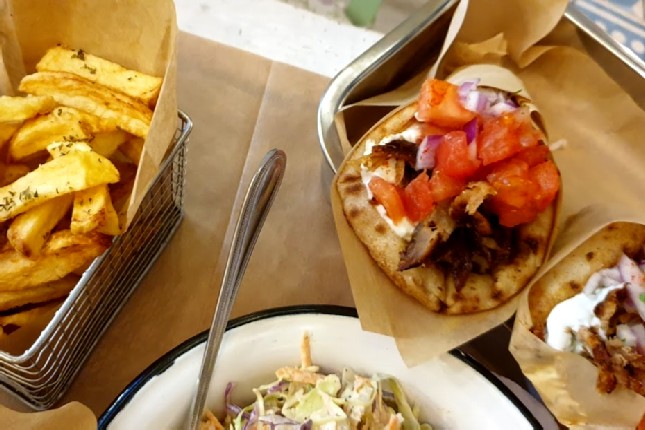
The most popular and cheapest of the eateries in Greece is the souvlatzidiko which can be found literally everywhere. The souvlatzidiko purveys the well-known dish souvlaki. Souvlaki is prepared using cubed pork meat that is grilled on a skewer. The most famous of Greek street food is usually eaten straight off the skewer while still hot. It is accompanied by a slice of bread soaked in grilled meat juices and lemon which is poked to the tip of the skewer.
Gyro is also served at the souvlatzidiko, although then the establishment is often called a “gyradiko”. Gyro, pronounced YEE-roh, is made from seasoned pork meat cooked on a vertical rotisserie. The meat is shaved off the large cone that slowly turns and roasts all day, cooking in its own juices. Both may be wrapped in pita bread and topped with tzatziki, fresh tomato and onion, and fries. They are typically eaten standing, walking or in any case outdoors.
Similarly, the psistaria, the Greek grill house, offers souvlaki and gyro, but also a wider variety of grilled meats like spit-roast lamb or pork, chops or steaks, kokoretsi, and rotisserie or grilled chicken.
The Taverna
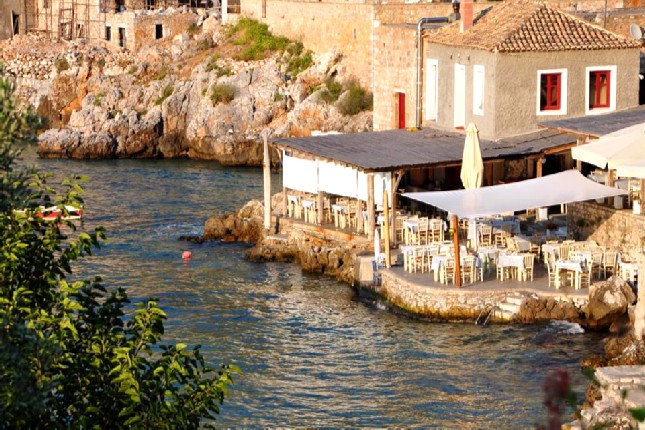
The taverna is the traditional public eating house of Greek cuisine and an integral part of Greek culture. It is traditionally decorated, usually with checked tablecloths, and family-run by hospitable owners. The taverna habitually has a limited amount of foods and serves whatever is available. The famous Greek dishes, such as moussaka, pastitsio, dolmades, and Greek salad are usually served in this kind of eatery. The taverna has become familiar to people who visit from other countries, as well as through the founding of tavernas abroad by Greek expats.
The less common subcategory, the hasapotaverna (the butcher’s taverna), specializes in meat. Butchered on the premises, the meat is usually of excellent quality, served in enormous portions and at a low price.
The psarotaverna (fish taverna) specializes in fish and seafood. Usually, you can try fresh fish, various appetizers and vegetables. Because of its seafood-focused menu, psarotavernas are more common on the Athenian Riviera, the Greek Islands, all along the coast of the Peloponnese and the mainland.
The Mageirio
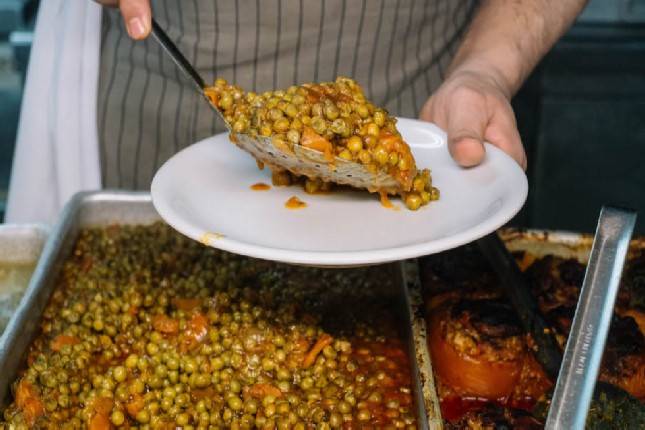
Eating at a mageirio is another experience altogether. The mageirio is a smaller, more casual neighborhood eatery which serves home-style dishes, most often also available for take-out. This lesser-known type of establishment is generally visited by locals and people dining alone. This is an inexpensive option because the dining style by custom is to order just a portion of food and something to drink, which makes it typically a lunchtime affair. The mageirio specializes in things like ladera, vegetables cooked in olive oil and tomato, moussaka, and lamb or chicken and potatoes in the oven. In most places, the cooked food is on display and you can pick whatever you like at the counter.
The Patsazidiko
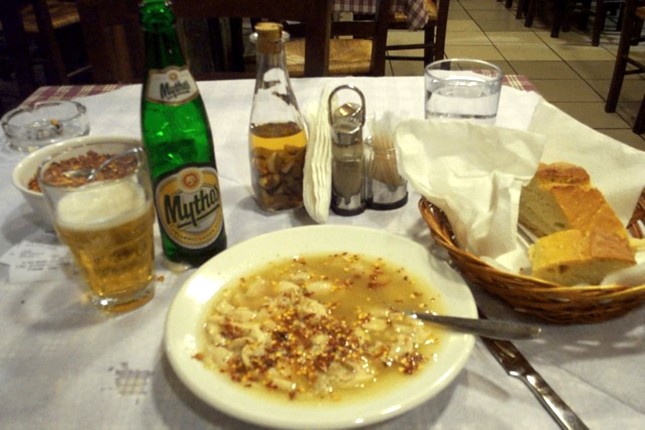
The patsazidiko, specializes in “patsas”, a tripe-and-veal-trotter soup that is prized for its nutritional value. Patsas has achieved cult status, playing a significant role in Greece’s working-class and after-hours culture. It is rich in collagen, which is said to calm the stomach and protect it from the effects of alcohol. For this reason, patsazidika are often open around the clock. Most patsazidika also serve other comfort food like chicken or goat soup, appropriate after a night of partying and drinking.
The Ouzeri
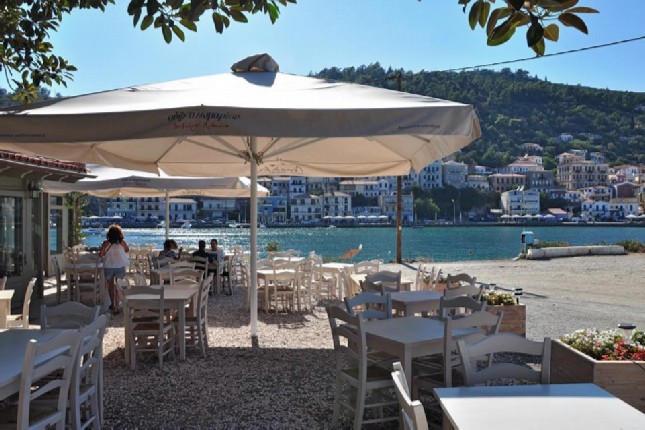
As the name reveals, the ouzeri is a place to enjoy ouzo - the national drink of Greece! The dishes that it enhances are called meze, the Greek tapas, and are usually smaller and sometimes intensely flavorful to accompany the drink’s strong taste. Eating at an ouzeri is mainly a shared experience, with all the small dishes placed in the middle of the table for everyone to taste. The refreshing anise aroma of ouzo makes it a good pairing with fresh shellfish and sea fish. Many ouzeries are located by the sea, especially on the Greek islands, but you can also find the ouzeri everywhere in Greece.
The Tsipouradiko
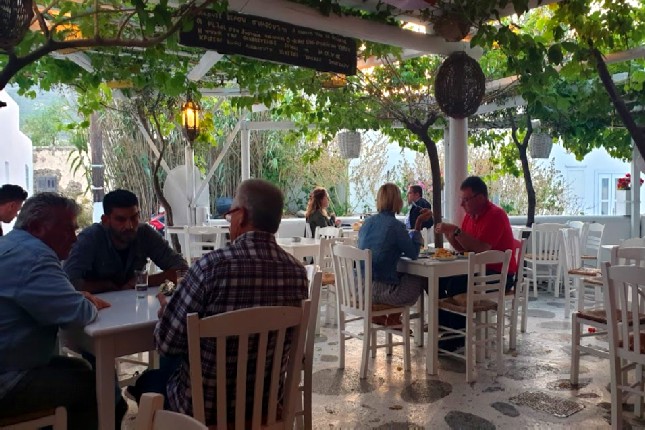
The tsipouradiko is like the ouzeri but the featured drink is tsipouro, another traditional spirit distilled from grape marc. These eateries attract students, artists, and bohemian types and are easily recognizable by their smaller tables and minimal decor. Tsipouro is a powerful drink, and you’ll want to pace yourself and spread it out over several dishes. With each bottle comes a different dish, to form an ideal progression that unfolds over the course of the evening. Of course, if you are not a fan of ouzo or tsipouro but still want to enjoy the ritual, locally produced beer or wine are likewise available at the mezedopolio, which serves a wider variety of mezedes.
The Kafeneio
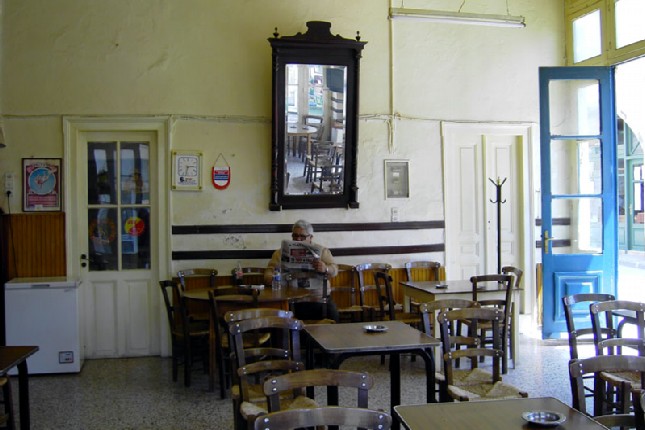
The kafeneio is the original coffeehouse and one of the oldest gastronomic institutions in Greece. Kafeneia can be found everywhere and are the preferred hangout for older Greek men. Traditionally, the kafeneio serves Greek coffee but just before noon, all begin to order their ouzo aperitif preparing for lunch. Then, one by one they head home to enjoy the main meal of the day and a short siesta, only to return for some more Greek coffee and then an evening of one or more glasses of ouzo and meze with friends.
The Estiatorio

The estiatorio is the Greek restaurant that serves casseroles and oven-cooked dishes, but also fish and grilled to order foods called “tis oras”, as well as appetizers and salads. These restaurants range from casual to quite elegant. Many are found on roof gardens overlooking the city or are simply with walls only that provide protection from the evening breezes, and the sky and stars open for your gazing.
The Kafeteria
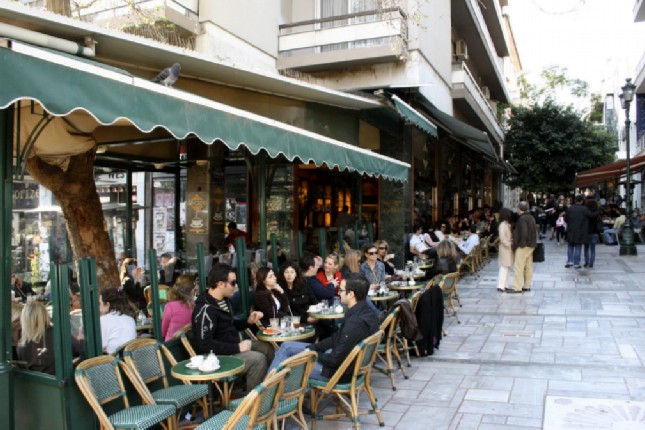
This is the place for morning snacks, toasted sandwiches, waffles, and ice creams. Kafeterias are usually located along the waterfront or around the main square of larger cities, like Athens, or smaller towns or villages, like Olympia. The kafeteria is a café where local people usually sit for hours relaxing and discussing with friends. These serve appetizers, as well as sandwiches, burgers, and wraps. Serving a variety of coffees ranging from Greek coffee to Freddo espresso or frappé, cafeterias sometimes offer lighter dishes and interesting salads.
The Fournos
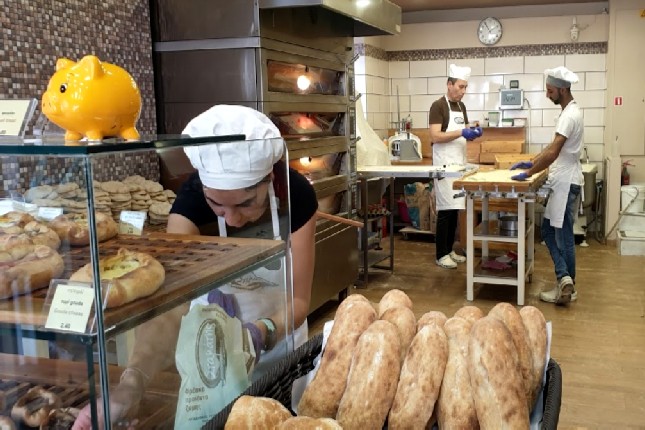
Quite possibly the most common food vendor you will see in Greece is the fournos, meaning bakery. The fournos sells fresh bread and pies as tyropita (cheese pie) and spanakopita (spinach pie). In every town or city in Greece at any time of day or night, you’ll see people walking down the street eating one of these delicious flaky pies.
In Greece, there’s definitely no lack of fancy estiatoria in gorgeous seaside settings or with killer views of sunsets over ancient temples, however, some of the best and most authentic food can be found in humble tavernas and no-frills tsipouradika. Whether it’s dining alfresco at a rickety table with the sea lapping at your feet or enjoying fine wine and modern Greek cuisine at a trendy Santorini restaurant overlooking the caldera, dining out in Greece is an experience that is not to be missed.

